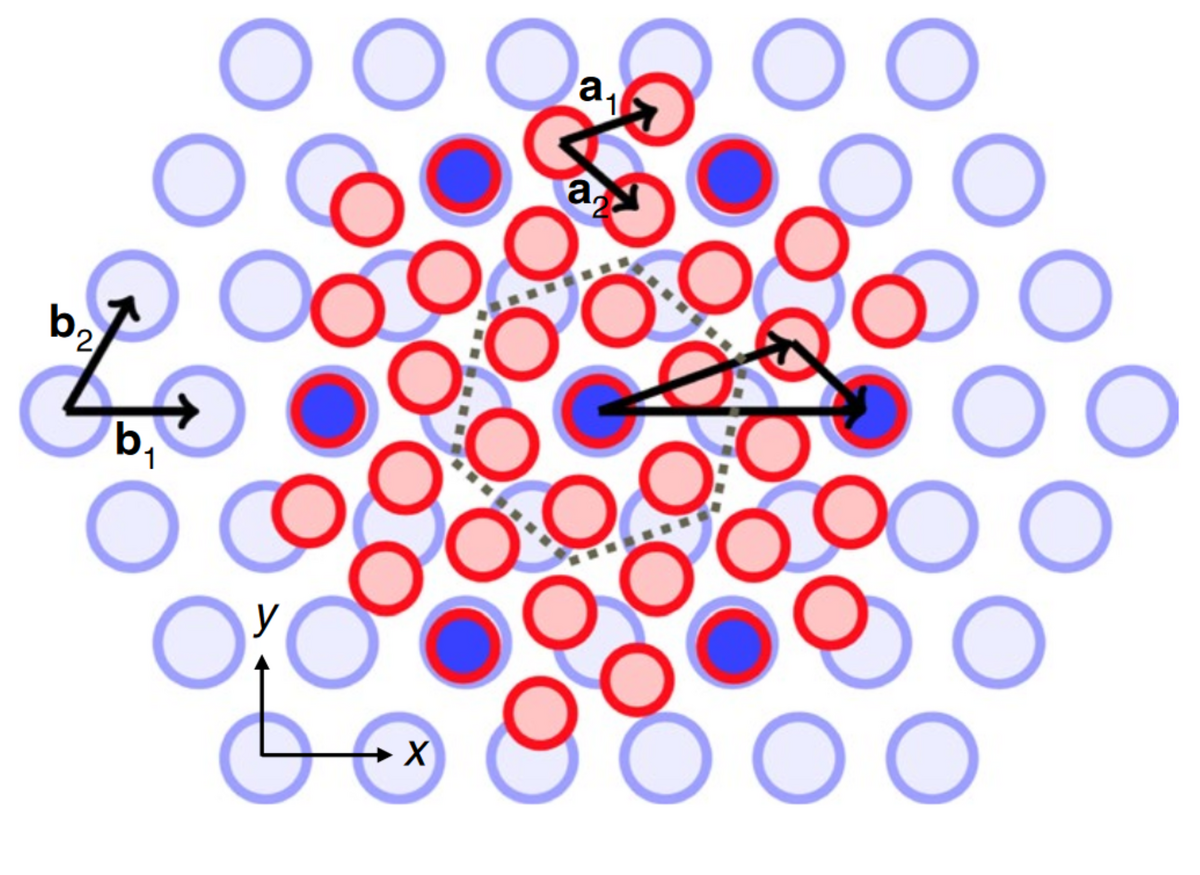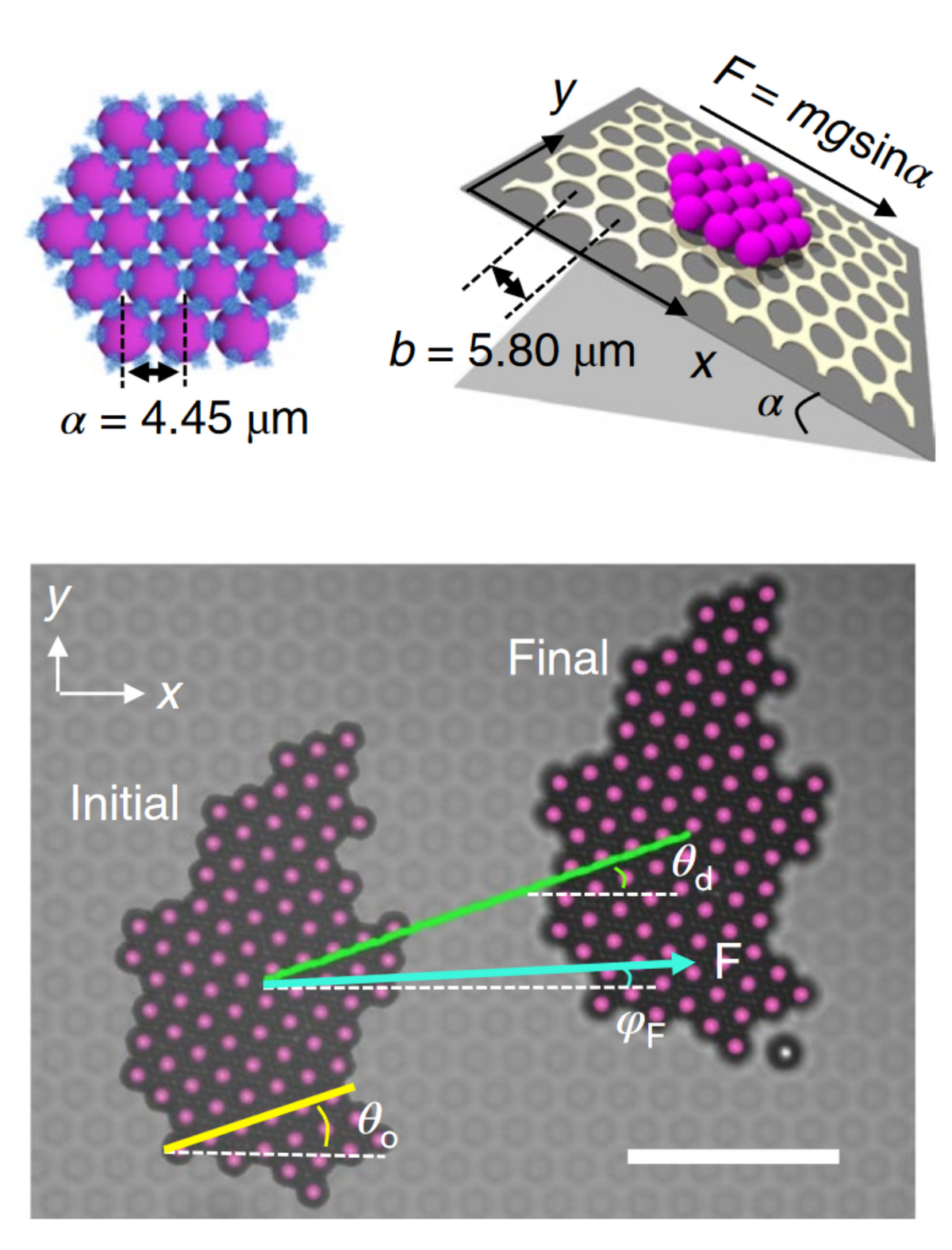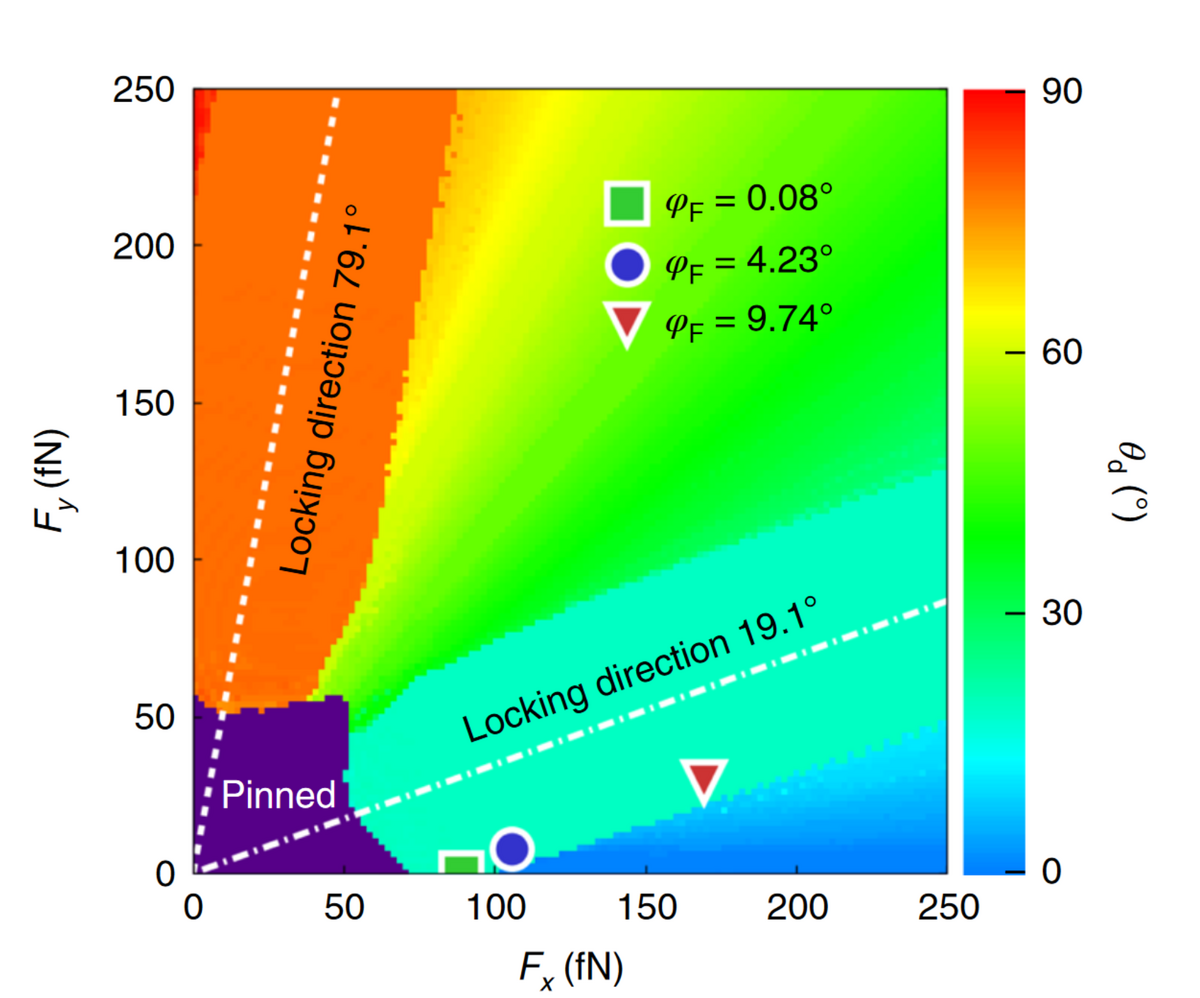
Orientational and directional locking of colloidal clusters

When particles are driven across crystalline surfaces, their trajectories do not necessarily follow the applied force but become locked to the substrate lattice directions. Such direc-tional locking, being relevant for bottom-up nanodevice assembly and particle sorting, has been intensively studied for isolated or single particles. Here we experimentally study the motion of extended colloidal clusters sliding over a periodically corrugated surface. We observe that both their orientational and centre-of-mass motions become locked into directions not coinciding with the substrate symme-try but determined by the geometrical moiré superstructure formed by the cluster and substrate lattices.

In general, such moiré superstructures are not strictly periodic, which leads to competing locking directions depending on cluster size. Remarkably, we uncover a dependence of directional locking on the higher Fourier components of the surface corrugation profile, which can be tuned on atomic surfaces via the external load. This allows for an unprecedented control of cluster steering relevant for nanomanipulations on surfaces.
| Orientational and directional locking of colloidal clusters driven across periodic surfaces |
X. Cao, E. Panizon, A. Vanossi, N. Manini, C. Bechinger Nat. Phys. 15, 776 (2019) |
